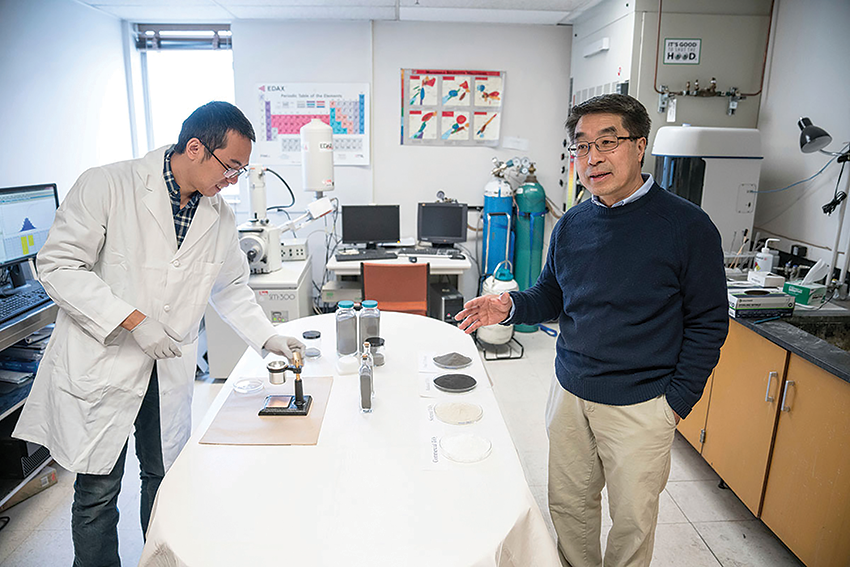Titanium metal—prized for its high strength-to-weight ratio, corrosion resistance, and biocompatibility—is a critical material in aerospace, defense, and medical applications, but its wider use is obstructed by excessively high costs.
That’s where materials sciences and metallurgical engineering professor Zhigang Zak Fang comes into play. A recent recipient of the prestigious Humboldt Research Award, Fang has developed a breakthrough technology that can produce high-quality, low-carbon emitting titanium powder at a significantly reduced cost. Known as the Hydrogen Assisted Metallothermic Reduction (HAMR) process, the technology developed by Fang is based on the discovery of new science about the effects of hydrogen on the stability of titanium solid solutions with high oxygen content (up to 14wt%.)
“Titanium metal is difficult to produce because of its strong affinity to oxygen,” says Fang, who was notified earlier this year about the Humboldt, which promotes scientific cooperation between research institutions in the U.S. and Germany. He discovered that the bond between titanium and oxygen can be destabilized by inserting hydrogen atoms into the titanium (II) oxide (Ti-O) solid solution lattices, leading to the completely new approach for sustainably producing low oxygen titanium with minimal energy and cost.
“By dramatically reducing the cost and carbon dioxide emissions of producing titanium powder, the HAMR process has the potential to fundamentally disrupt and transform the global titanium metal industry,” continues Fang.
Today, the U.S. imports almost all the “titanium sponge” it consumes each year, and it is made by an older process that is inefficient, expensive, and energy intensive. China and Russia control about 70 percent of the global market for titanium sponge, creating a significant supply chain vulnerability for a metal critical to America’s national defense.
Fang’s research, which led to the HAMR technology, promises to improve energy efficiency dramatically. The HAMR process can produce primary titanium metal from either minerals or titanium scrap. The result is that high-oxygen titanium metal is transformed into low-oxygen titanium powders that meet or exceed stringent aerospace and biomedical industry standards.




Comments
Comments are moderated, so there may be a slight delay. Those that are off-topic or deemed inappropriate may not be posted. Your email address will not be published. Required fields are marked with an asterisk (*).